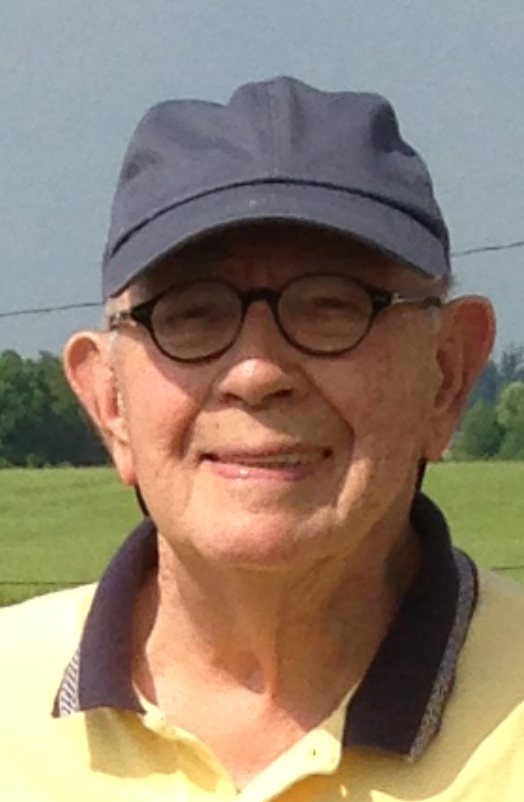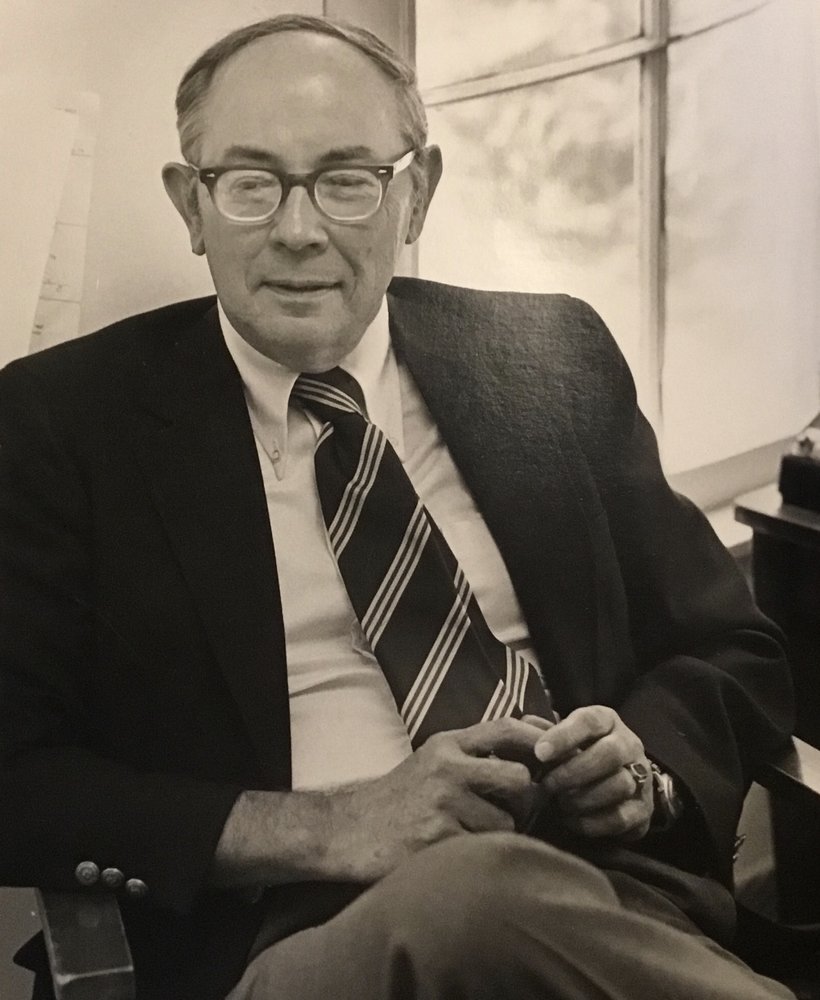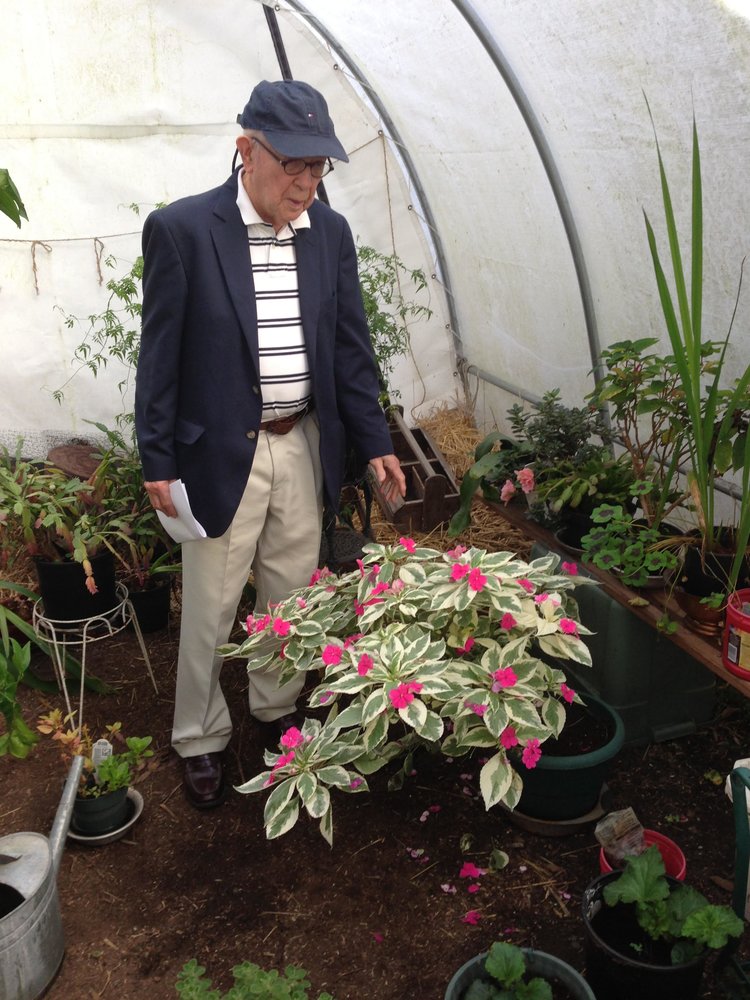





Obituary


Obituary of Arthur Clements Young, PhD
Arthur Clements Young was born April 27, 1923, 5AM in the morning at his grandmother’s house in Detroit, Michigan. He was the son of Arthur Fred Young, who worked for the City of Detroit, and Jessie Clements, who emigrated from Belfast, Northern Ireland. She left Belfast, in September of 1912, traveling on the Manitoba, one of the ships that came to the rescue of the Titanic in April of that same year.
April of 1923 had Harding as president, television was yet to be invented, penicillin was still to be discovered and The Great Depression was more than 6 years off. Prohibition was the law and Art would say that he and his sisters couldn’t swim off his grandmother’s dock on Lake St. Clair because of all the broken bottles that had been dumped by smugglers from Canada.
Polio was the scourge of the time and inflicted Art when he was just 4, in 1927. As he was lying sick, an aunt looked at him and said to his mother, “Jessie, he’s not going to make old bones.” He recovered and her pessimism proved faulty.
His family believed in education. Every Saturday, his father would take his sisters, Anne, the eldest, and Shirley, the youngest, and Arthur, the middle child, to the library to pick out books. Westerns garnered his pleasure.
Denby High School, in Detroit, was his alma mater, where he graduated in 1941. Every high school relied on its newspaper in the days before instant media. Students vied for the few positions available. As a junior, Art gained a place as a columnist for his high school’s paper, calling it “On the Port Side”, writing political commentary. He made friends at Denby that would beckon him to return for their reunion celebrations fifty years into the future. Wally Cox, the actor and voice of Underdog, was a classmate who, as Art recalled with weathered regret, “sat on my record collection and broke them”.
1941 saw the attack on Pearl Harbor: “It was an entire week before we knew the fate of my brother-in-law.” Their news was good, he was safe. Art sought to enlist, with his dream, like many teenagers of that generation, in the Army Air Corps to become a pilot, traveling to Plattsburgh, NY to test. Eyesight was primary for flying and Art wore strong glasses. He was rejected. So he continued his education, studying at Wayne University.
But in February, 1943 he received a draft notice from: The US Army Air Corps. From March of 1943 to February of 1946, he served his country.
“After my training in Florida, we were put on a troop train to Colorado. A sign read, ‘NO SHOOTING BUFFALO FROM THE TRAIN.’”
War stories, beyond that simplicity, were not spoken. Though Army life was! Those 3 years in the Army Air Service Command never left him. The desire for learning brought him back to Wayne. In 1948, he attained his bachelor’s in literature. And Wayne recognized him as talented. Art impressed them with more than his studiousness, he could speak: he had a mellifluous voice and a gentle spirit. They asked him to stay on as an instructor. 1948 was the year the GI Bill was passed, which afforded World War One veterans the opportunity to return to college. “I taught the Forty and Eight!”, he would say. “40 men and eight mules to a train car.” As these particular veterans were then known.
Dylan Thomas, the Welsh poet, famous for the poem “Do not go gentle into that good night” would come to Detroit too, in 48. Art befriended him and showed him the town. The two shared a love of poetry and language and drinking! When Thomas died in 1954, Art helped to send his body back to Wales for burial.
Because of his time teaching at Wayne and his interest in literature, he decided to pursue a PhD and was accepted to several prestigious schools. He had the choice between Harvard and Yale. He entered Yale in 1950. Since he “wasn’t wealthy”, he wore his Army uniform, bearing his rank of sergeant.
In just three years, Art attained both a Master’s degree and a PhD, a further sign of his intellectual prowess and his dedication to learning. Yale was where he began his study into the life and works of the 19th century English novelist, George Gissing. Gissing’s revival as a worthy literary figure was taking shape. And in 1961, while an assistant professor at Rutgers University, Dr. Young had completed and published his first compendium on the writer, “The Letters of George Gissing to Eduard Bertz”. The fall semester of 1953 was to begin, and the young PhD had taken an instructor position at Carnegie Tech, later to be known as Carnegie Mellon. A close friend was also hired by Carnegie. “They told us, ‘ we want to hear your ideas. Please speak up and tell us what you’re thinking.’” “Dan spoke up and was not asked back.”
In the summer of 1954, Art traveled to England and Europe for research aboard the grand ocean liner, The United States. Even by 1954, reminders of the war he fought in remained. “There were still piles of rubble leftover from the war.”
Art was always looking for new challenges or opportunities in the academic world and in the Fall of 1954 he was appointed as an assistant professor at Rutgers University, then a private school. As a member of their esteemed English Department he taught alongside the illustrious poets, John Ciardi, and Horace Hamilton; and the well known writer, Paul Fussell. It was at Rutgers where Art would come to meet such noteworthy people as former First Lady Eleanor Roosevelt, and the great American poet, Robert Frost. As Director of Foreign Students, Professor Young gave a conference where he invited the former First Lady to speak. “While she was there, she fell asleep and we went on until she woke.” Robert Frost would come to talk with the people of the English Department. “They were very informal gatherings. In one, we sat on the floor around Frost as he sat in a chair. He read his poetry, some that were never published.”
Rutgers is where Art would meet Paul Mattheisen, a graduate student and later PhD. Paul and he would form a life-long friendship centered on their later collaborative work, “The Collected Letters of George Gissing”, a nine volume accumulation of the correspondences Gissing made and received from 1863 until his death in 1903.
Rutgers was another stepping-stone. Art had taken on many roles there: Editor of the Rutgers Journal; Director of Foreign Students; Academic Adviser to the Football Team and, after seven years of sweat, finally, a tenured Associate Professor. But now he saw college administration as a right choice for him to help preserve institutional academic integrity. In 1967, Russell Sage College offered him the role of Vice President and Dean of Faculty. He accepted and made sure that he came on not just as an administrator but also as a Full Professor, tenured. “I became an administrator just at the time when college campuses were reeling in turmoil.” Even at the small Russell Sage Women’s College, bullets were put through the office windows. But the WWII veteran was unflappable, “if you’re planning on burning the office, let me know so I’m not there.” He remained Vice President until 1971 and Dean of Faculty into the 1980’s.
Teaching was his best, most loved role. It was his passion. The accolades for which came by the admiration and respect of both his students and colleagues. Art was a beloved teacher. It was not odd for him to receive a letter in the mail or a telephone call from a former student from decades past saying how he had impressed and inspired them. They never forgot him. One former Rutgers’ student would travel up from New Jersey with his family once a year to see him.
Teaching was a way to convey his passion for life. This was not a “passion for life” of the daredevil kind but a love for other living things. The fostering of one’s imagination so as to understand the world describes his pedagogical approach.
Professor Young once gave a speech on “passion” which inspired a man to quit his profession to pursue his dream to study anthropology. Art had ideas of life. But this was not in a singular way. He was a scholar. His teaching was not just impressive because of his energy or zest. He had authority over his subject. He had integrity: Integrity built on learning and scholarly work.
1988 was the year Dr. Young retired from Russell Sage College. He was, after all, 65. His years at Sage earned him the title of “Professor Emeritus”. And he gained many good friends. Many of whom, while he was in the administration, were calling for his head. But as one good friend of 50 years said, “Art listened to you. You knew that he heard you and that he cared.” Over and over, that was a constant theme from those who knew him: He listened. That was another extraordinary talent or maybe the same talent he always had and what drew people to him.
Retirement for him was just a new third of his life yet to be lived.
Years earlier, Professor Young had begun his study into the life and works of George Gissing. Art’s ability to understand people and decipher their psychological motives was steeped in Freudian theory. Characters of fiction, who may have seemed flat to the student, became alive and tangible. Ordinary people were given deeper meaning by his thoughtful insight. Purpose appeared from small observations. “I once taught a course, ‘Writing through observation’”. The simplicity of having a starting point! Gissing, with all his works of fiction and all his correspondence, was a perfect candidate for diagnosis by the doctor. And his interest sparked his former graduate student, now, himself, a professor of English literature at the State University of New York at Binghamton, Dr. Paul Mattheisen, to join him in the production and publication of a truly monumental feat of nine volumes, “The Collected Letters of George Gissing”. They were also joined in this great effort by the indefatigable French Professor of English Literature, Pierre Coustillas of the University of Lille, Lille, France. The three proved to be a triumvirate of scholarly production. “The Collected letters of George Gissing” is a contribution to civilization that few people achieve. The three co-editors gathered, translated, and expounded upon these correspondences between Gissing and others, including such great writers as Henry James and H. G. Wells. The work is a major contribution to literature, biography, history and culture. It is an unmatched reference to the zeitgeist of late 19th century England and Europe. Very few people, living or dead, can be so completely known as well as George Gissing, thanks to the these editors. The difficulty of their work came in all forms, with each editor’s expertise coming to the fore. If Art had not studied and written about Gissing while at Yale and published while at Rutgers, the volumes may have never been produced.
In 1997, The SPECTATOR magazine, a highly regarded source of literary critique, called their work the best editing of the 20th century. An acknowledgment they celebrated. The literary world congratulated them further when the Modern Language Association awarded them the “Morton N. Cohen Award for Distinguished Edition of Letters” with a ceremonial presentation in Chicago! Much of Art’s work on the “Letters” happened during his retirement after the age of 65 and while he was teaching at the Albany College of Pharmacy or ACP. ACP asked Dr. Young to give a seminar on James Joyce’s “Ulysses” to their faculty. The ACP administration was so impressed that they asked him on as an Adjunct Professor. Much in the same way that Art had been asked by Wayne University over 40 years earlier to come join their faculty: history repeating! The position of Adjunct Professor was somewhat funny to some of Art’s confidants since they knew the caliber of the sage philosopher. Art was eager to join ACP and was asked back semester after semester for 18 years. And 18 years all during his supposed “retirement”.
The students at ACP loved him too and frequently sought him out as a counselor to their college-age problems. They couldn’t resist their grandfatherly professor, in fact, and invited him to their gatherings. One student even gave the Professor his homemade beer.
Dr. Young wasn’t just a tour de force of intellect or a dour archetypal scholar, but someone students trusted because they knew that their own intellect was safe in his hands to let go and imagine.
In 1960, Art bought a getaway home in the Northeast Kingdom of Vermont. It was a broken-down old farm house with 11 acres, in the middle of nowhere, at a time when the middle of nowhere was really just that. The old farm would be more than a respite escape from the demands of academia. Art found the world of rural Vermont. He worked on his old house to make it livable. He met and befriended his neighbors and towns’ people, who had a distinct country accent. And he spent time cultivating flowers, fruits and vegetables for his pleasure. The garden became his true escape. People who came by to see him would, most likely, find him kneeling somewhere pulling weeds or planting a new find. One plant in particular he discovered there was a variegated impatient. He knew its uniqueness immediately and began to propagate it for the next half-century. The garden gave him satisfaction that encompassed all aspects of living. And living was Art’s passion. He cultivated plants. He rescued animals. He nurtured academic curiosity of students. He guided institutions.
In 1993, when he was teaching at ACP, Russell Sage asked him to come back to teach. He, of course, agreed and designed a new course for the occasion called: “The Complete Garden”.
“The Complete Garden” would begin in the beginning with “The Garden of Eden” from “Genesis” and included over a dozen excerpts from great pieces of poetry and literature: Shakespeare’s “Sonnet 18”; Milton’s “Paradise Lost”; Steinbeck’s “Chrysanthemums”. The class was immediately popular. Dr. Young’s idea was to include a Biologist to co-teach. There were trips scheduled to visit great gardens of the Northeast: The Berkshire Botanical Garden in Stockbridge, Massachusetts; Naumkeag also in Stockbridge; the hidden garden behind Lark Street in Albany. “The Garden” course brought together the professor’s interests in both teaching literature and gardening. It highlighted his passion for life and imagination. Through it, he showed how the garden is a metaphor for living: controlled wildness, cultivated achievement, the fruits of one’s labor, planned. He revealed the symbolism of the garden in literature: good and evil, beauty and desire, bounty, the blossoms of life. Simply, the garden is an expression of life: beautiful if cared for; fruitful if healthy. “The Garden” showed the importance of cultivation as a metaphor of the mind and spirit.
Art’s primary home was another old farmhouse on 4 acres of rich Rensselaer County soil. Here he planted a fruit tree orchard. He propagated roses. And every year planted gardens. He grew vegetables for his table and to share with his friends. He grew flowers that he loved to cut to give to his neighbors. It didn’t seem to matter what the time of year, he always had something in bloom. But it was his presence that people loved.
2008 was the last formal class the professor would teach. His eyesight was too poor to drive. He was 85! But he was still in top form otherwise.
Art had spent his life learning so to fuel his great imagination. He made his living from his imagination. Dying was anathema to him. Even at the age of 97, he expressed his desire to visit Gilbert Stuart’s Homestead in Rhode Island and to take a trip to the Corning Museum of Glass. One place of particular fondness was The Clark Art Museum where he was a member. Theater and art exhibitions and dance performances and concerts were all enlivening to him. And he saw them as an equal to the genre of his devotion. He was a writer. He was an editor. He was a Professor. He was a gardener. He was a friend.
Arthur Clements Young died on June 21, 2020 at his home. He died while cared for by his close friends and he died knowing that he was loved which was his constant gift to those who were fortunate to know him.



